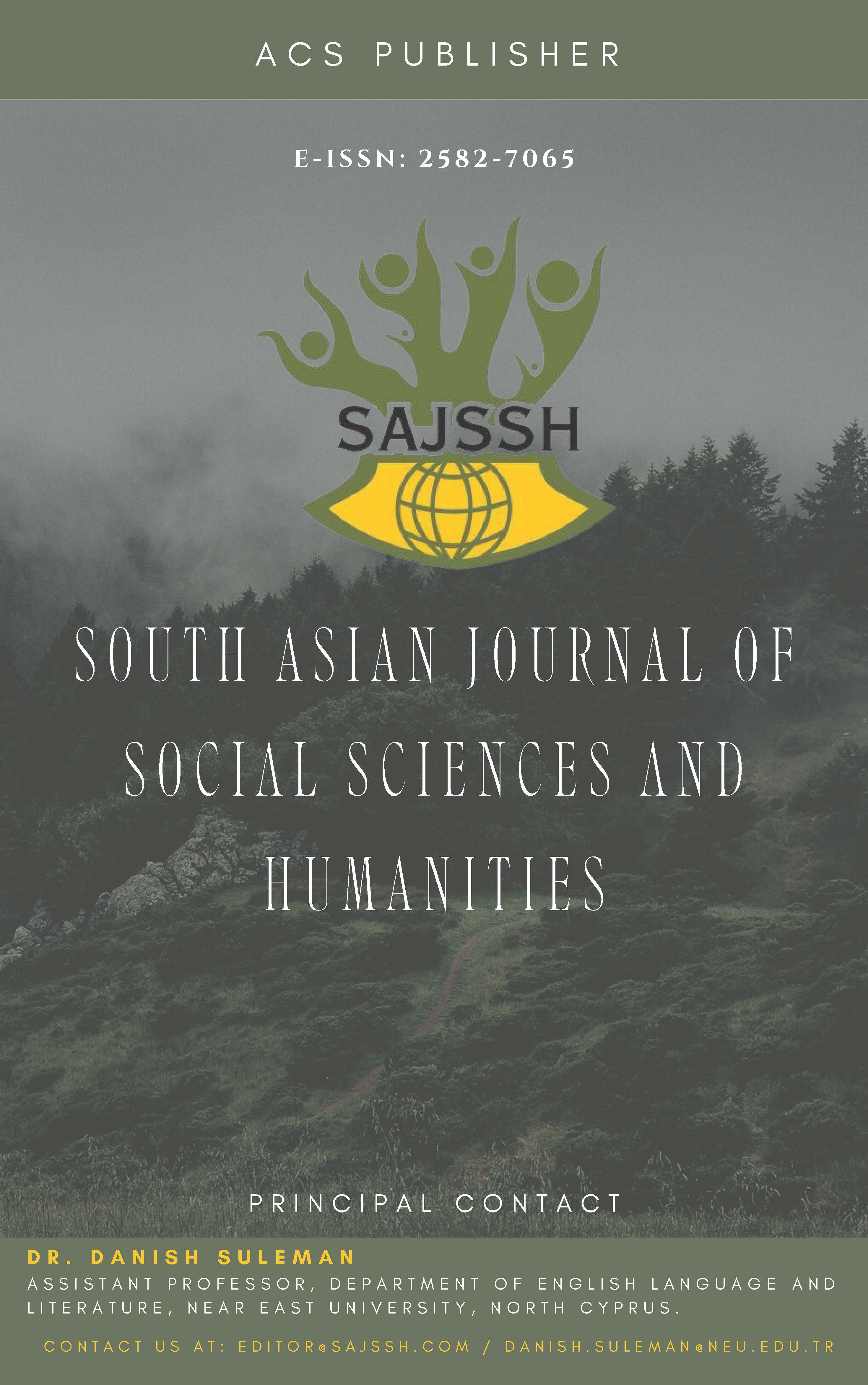Pre-service Teachers’ Oral Presentation Anxiety in The Second Language in A Teacher Training Institute
DOI:
https://doi.org/10.48165/sajssh.2021.2205%20Keywords:
Oral presentation anxiety, Pre-service teachers, Written self-reflectionAbstract
Oral presentation skills are viewed as essential in terms of the pre-service teachers’ pre-service teachers professional development. They feel anxious in oral presentation that can be categorised as fear of negative evaluation (FNE), test anxiety (TA), communication apprehension (CA) as well as topic and content anxiety (TCA). Specifically, the study investigate oral presentation anxiety associated to the themes namely FNE, TA, CA and TCA in the English language classroom. Data for this study was obtained through written self
reflection that was administered to 14 pre-service teachers in Institute of Teacher Education to investigate their oral presentation anxiety before and after the oral presentation. Findings put forward that most of the students express their feelings, attitudes and thoughts with oral presentation anxiety when they have to talk English in the classroom from different themes. The lecturers will have the awareness about the oral presentation anxiety to plan the teaching and learning in oral presentation classroom.
References
Al-Nouh, N. A., Abdul-Kareem, M. M., & Taqi, H. A. (2015). EFL College students’ perceptions of the difficulties in oral presentation as a form of assessment. International Journal of Higher Education, 4(1). doi:10.5430/ijhe.v4n1p136
Al-Saqqaf, A. A. M. (2015). The relationship between oral communication strategy use with language motivation and language anxiety among Yemeni postgraduates in Malaysia. (Doctor of Philosophy), Universiti Utara Malaysia, UUM Sintok.
Amiri, F, & Puteh, M. (2018). Oral communication apprehension among international doctoral students. English Language Teaching, 11(2), 164-171.
Baecher, L., McCormack, B., & Kung, S. C. (2014). Supervisor use of video as a tool in teacher reflection. The Electronic Journal for English as a Second Language, 18(3), 17.
Bibi, Z., & Javaid, S. (2020). Forgiveness as a moderator for the relationship between suicidal behavior and anger expression among University students. South Asian Journal of Social Sciences and Humanities, 1(1), 68-81.
Bilal, H. A., Tariq, A. R., Rashid, C. A., Adnan, R., & Abbas, M. (2013). Problems in speaking English with L2 learners of rural area schools of Pakistan. European Journal of Humanities and Social Sciences, 24(1), 17.
Brown, T., & Morrissey, L. (2004). The effectiveness of verbal self-guidance as a transfer of training intervention: its impact on presentation performance, self-efficacy and anxiety. Innovations in Education and Teaching International, Vol. 41, No. 3, August 2004., 41(3), 256-270.
Chin, V., Ling, T. H., & Yih, Y. J. (2016). Investigating English Language anxiety among UiTM Sarawak undergraduates. Journal of Creative Practices in Language Learning and Teaching (CPLT), 4(1).
Finn, A. N., Sawyer, C. R., & Schrodt, P. (2009). Examining the effect of exposure therapy on public speaking state anxiety. Communication Education, Vol. 58, No. 1, January 2009, 92-109., 92-109.
George, D., & Mallery, P. (2003). SPSS for windows step by step: A simple guide and reference (4 ed.). Boston: Allyn & Bacon.
Hammad, E. A., & Abu Ghali, E. M. (2015). Speaking anxiety level of Gaza EFL pre-service teachers: Reasons and sources. World Journal of English Language, 5(3). doi: 10.5430/wjel.v5n3p52
Hindo, C. S., & Gonzalez-Prendes, A. (2011). One-session exposure treatment for social anxiety with specific fear of public speaking. Research on Social Work Practice September 2011 21: 528-538.
Horwitz, Horwitz, M. B., & Cope, J. (1986). Foreign language classroom anxiety. The Modern Language Journal, 70(2), 125-132. doi:10.1111/j.1540-4781.1986.tb05256.x
Krashen, S. (1985). The input hypothesis: Issues and implications. New York: Longman.
Krashen, S. D., & Terrell, T. D. (1995). The natural approach: Language acquisition in the classroom. Great Britain: Prentice Hall Europe.
Mallanhanse, A. K., Alias, N. F., & Bidin, S. S. N. B. A. (2020). Peer Acceptance among Learning Disabilities (LD) and Mainstream Students in Inclusive Classroom in a Primary School. South Asian Journal of Social Sciences and Humanities, 1(2), 16-25.
Price, M., & Anderson, P. L. (2012). Outcome expectancy as a predictor of treatment response in cognitive behavioral therapy for public speaking fears within social anxiety disorder. Psychotherapy 2012, Vol. 49, No. 2, 173–179, 49(2), 173-179. doi:10.1037/a0024734
Safir, M. P., Wallach, H. S., & Bar-Zvi, M. (2012). Virtual reality cognitive-behavior therapy for public speaking anxiety: One-year follow-up. Behavior Modification, 36(2 Mac 2012), 235-246.
Tanielian, A. R. (2014). Foreign language anxiety in a new English program in Thailand. The International Education Journal: Comparative Perspectives, 13(1).
Webster, F. (2002). A genre approach to oral presentations. The Internet TESL Journal, Vol. VIII, No. 7, July 2002.
Wilches, A. (2014). Learners’ perceptions of the benefits of voice tool-based tasks on their spoken performance. Gist Education and Learning Research Journal, 8(January-June), 48-65.
Wisdom J and Creswell JW. Mixed Methods: Integrating Quantitative and Qualitative Data Collection and Analysis While Studying Patient-Centered Medical Home Models. Rockville, MD: Agency for Healthcare Research and Quality. February 2013. AHRQ Publication No. 13-0028-EF.
Downloads
Published
Issue
Section
License
Copyright (c) 2022 South Asian Journal of Social Science and Humanities

This work is licensed under a Creative Commons Attribution 4.0 International License.





